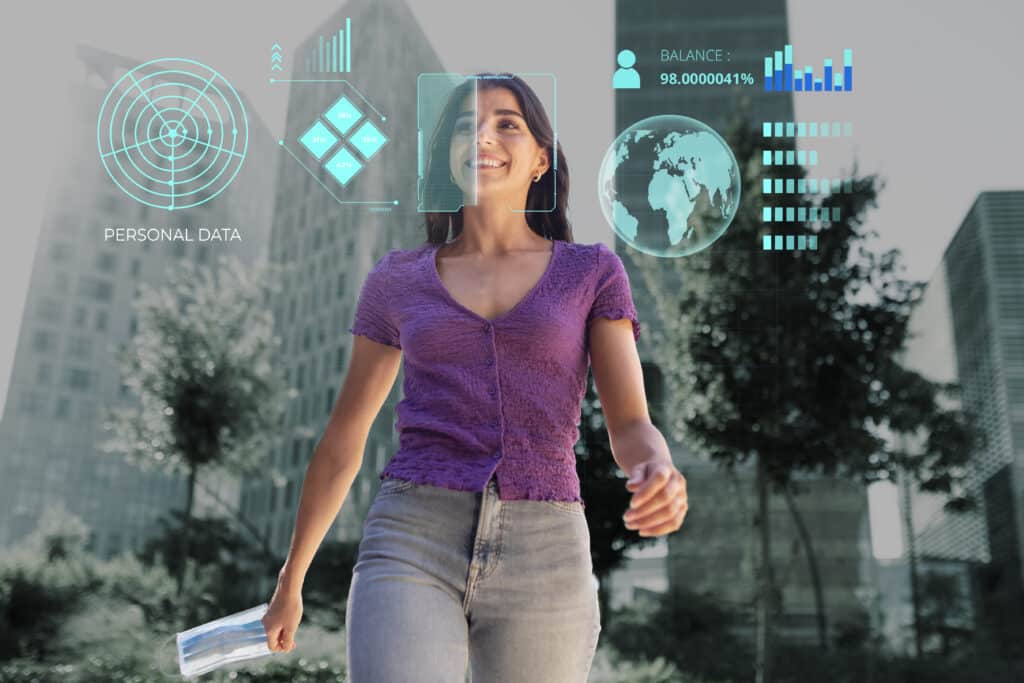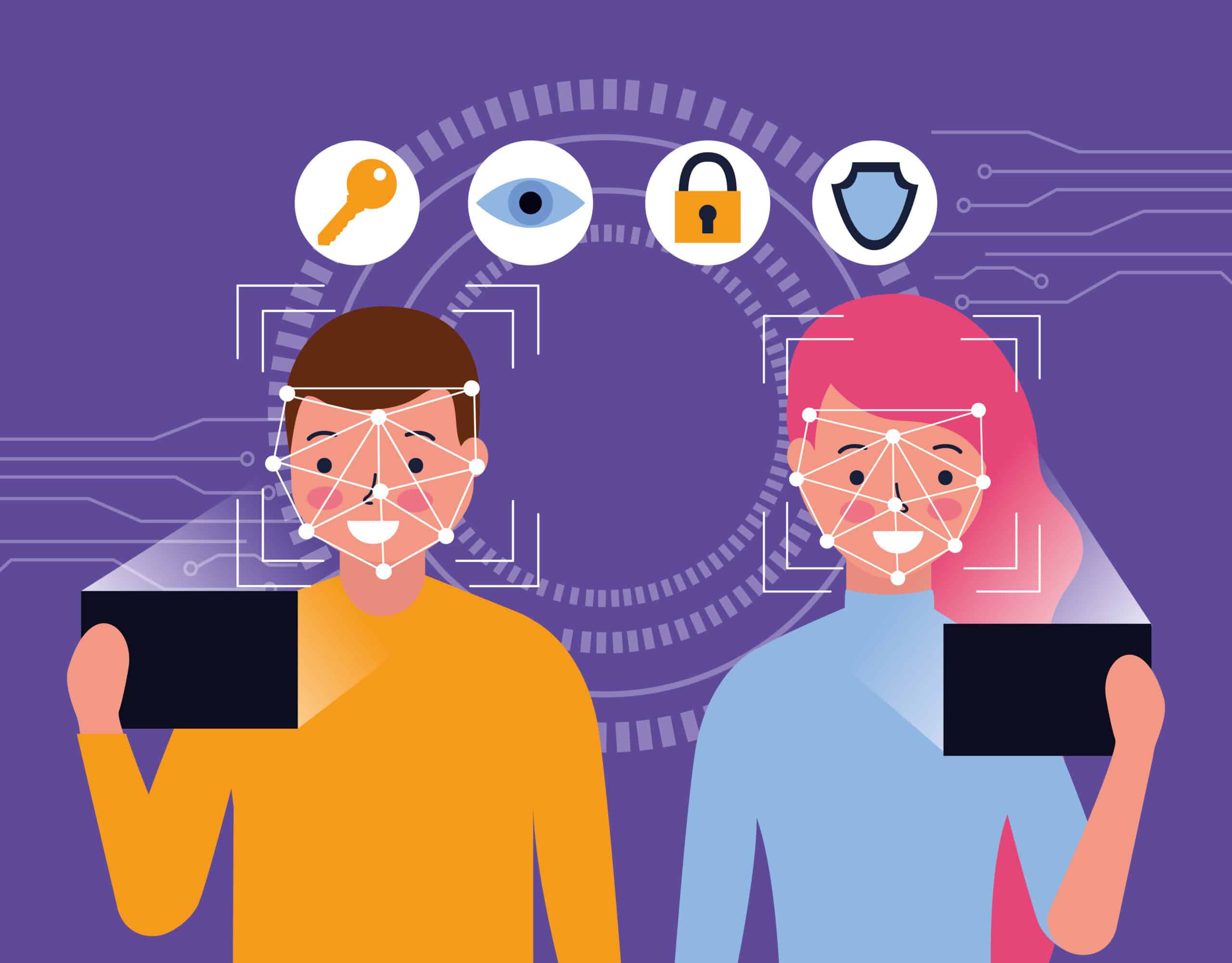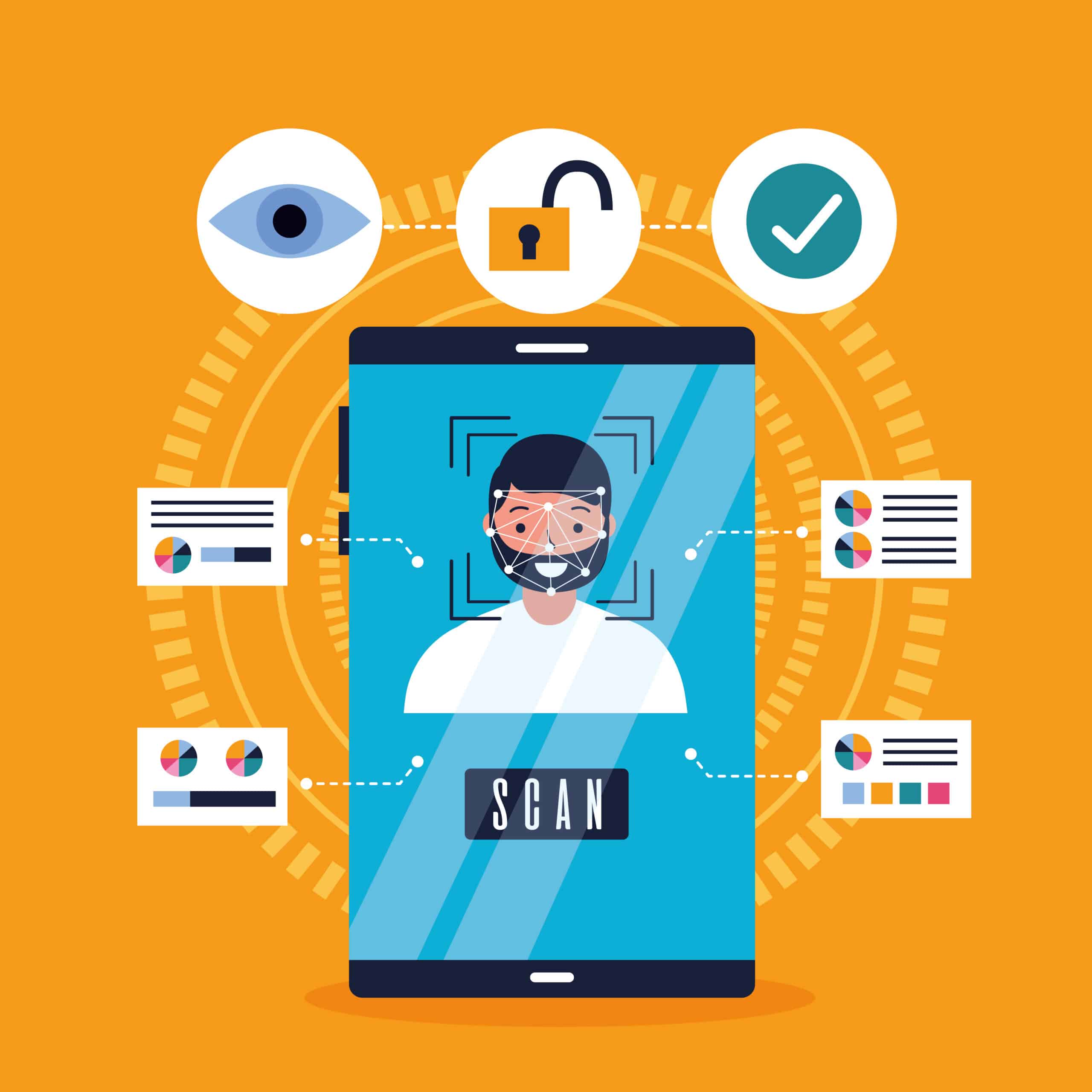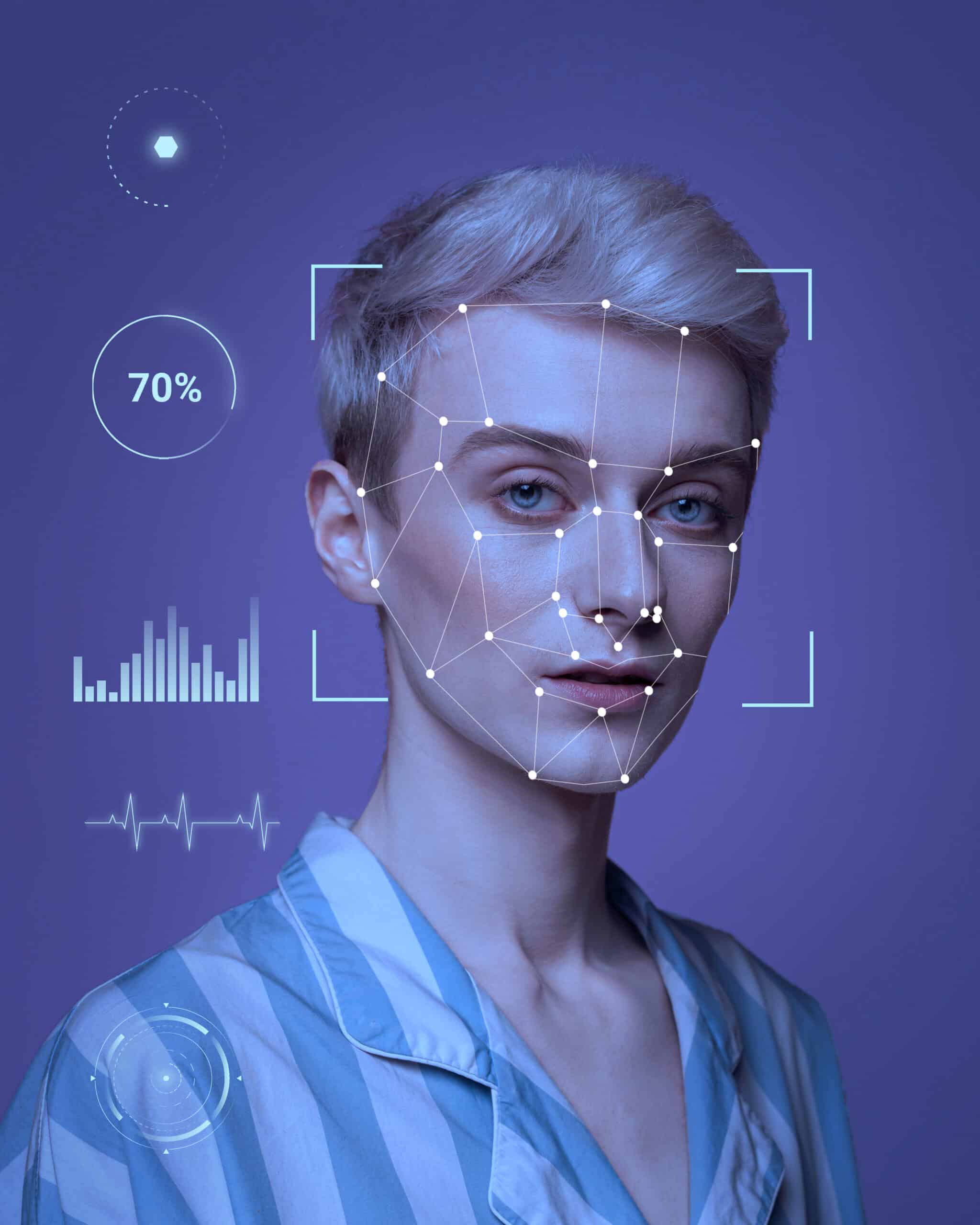Facial Recognition Identity Verification: Advancing Authentication Protocols


Facial recognition technology has revolutionized the way we verify identities in various sectors. From enhancing security measures to streamlining authentication processes, the benefits are undeniable. Concerns about privacy, bias, and security vulnerabilities remain. We will delve into how facial recognition identity verification works, its benefits, concerns, current applications, identity verification for advancing authentication, and future developments in this advancing authentication protocol.
Explore the world of facial recognition identity verification together.
What Is Facial Recognition Identity Verification?
Facial Recognition Identity Verification is a process that utilizes biometric technology to authenticate users’ identities by analyzing facial features.
This technology has significantly transformed digital identity management and user authentication processes by providing a highly secure and reliable means of verifying individuals. With the increasing occurrence of identity theft and cyber fraud, facial recognition has emerged as a robust solution that offers enhanced protection against unauthorized access or fraudulent activities. The application of biometric technology in identity verification not only enhances security measures but also offers a convenient and efficient way for users to verify their identities quickly and accurately.
How Does Facial Recognition Identity Verification Work?
Facial Recognition Identity Verification operates through a series of steps including face detection, alignment, feature extraction, and face matching to validate users’ identities.
- Once an individual’s face is detected, the system analyzes key facial landmarks to ensure correct alignment for accurate feature extraction.
- This process involves capturing unique facial characteristics such as the distance between eyes, nose shape, and jawline contours.
These features are then converted into a mathematical representation known as a face template, which is used for matching against stored templates in the database. Facial matching is the final stage where the system compares the extracted features with the templates to confirm the user’s identity, providing a secure and reliable means of access control.
Face Detection
Face Detection is the initial stage in Facial Recognition Identity Verification, where facial scanning technology analyzes facial features based on predefined algorithms.
This process involves capturing an individual’s facial image and breaking it down into data points such as distance between eyes, nose shape, and overall facial structure. These data points are then compared against a database of stored facial templates to identify a match.
The accuracy of face detection is crucial in ensuring the reliability of the entire identity verification process, as it sets the foundation for further steps such as face recognition and verification. Advanced algorithms are essential for handling variations in lighting, angles, and facial expressions to achieve precise and reliable detection results.
Face Alignment
Face Alignment in Facial Recognition Identity Verification involves adjusting facial attributes to a standardized position using specialized tools for accurate comparison.
This process is crucial in ensuring that facial recognition technology can make consistent and reliable comparisons across different individuals. By aligning features such as eyes, nose, and mouth to a universal reference point, the system can effectively identify unique characteristics and match them with stored data. Various tools and techniques are employed to achieve precise alignment, such as landmark detection algorithms, 3D models, and machine learning algorithms. These tools help eliminate variations in pose, expression, and lighting conditions, resulting in more accurate and secure identity verification.
Feature Extraction
Feature Extraction is a crucial phase in Facial Recognition Identity Verification that involves extracting biometric data from facial images using specialized software.
During the process of Feature Extraction, the specialized software plays a vital role in capturing detailed information from various facial features to create a unique biometric profile for identification. This software not only recognizes physical characteristics like the distance between eyes or the shape of the nose, but also captures more nuanced details such as skin texture and facial contours. By analyzing these intricate features, the software can generate a comprehensive set of data points that form the basis of the recognition process. This sophisticated technology enhances security measures by ensuring accurate and reliable identity verification.
Face Matching
Face Matching in Facial Recognition Identity Verification compares extracted facial features with stored biometric data to confirm identity through specialized recognition systems.
This phase is crucial for accurately verifying an individual’s identity by analyzing unique facial characteristics such as the distance between eyes, nose shape, and jawline contours.
Advanced recognition systems utilize sophisticated algorithms to process and compare these details, ensuring that the authentication process is both fast and highly secure.
By cross-referencing the live facial image with the database of pre-registered faces, these systems are able to perform complex calculations in real-time to generate reliable identity validation outcomes.
What Are The Benefits Of Facial Recognition Identity Verification?
Facial Recognition Identity Verification offers enhanced security measures through real-time verification, ensuring secure logins and heightened user security.
This advanced technology provides an extra layer of security by accurately verifying the identity of users through unique facial features, reducing the risk of unauthorized access. With its real-time verification capabilities, organizations can quickly authenticate users, enhancing overall security protocols.
Facial Recognition Identity Verification eliminates the vulnerability of stolen passwords or compromised credentials, making it a reliable and efficient method for protecting sensitive information. By integrating facial recognition into security systems, businesses can significantly improve their defenses against cyber threats and unauthorized intrusions.”
Increased Security
One of the key benefits of Facial Recognition Identity Verification is the increased security it provides through robust security measures, secure access control, and fraud prevention.
Facial Recognition Identity Verification plays a crucial role in enhancing identity verification processes by offering a highly secure biometric authentication method. By analyzing unique facial features, this technology ensures accurate identification, significantly reducing the risk of unauthorized access or identity fraud.
This level of security is particularly valuable in high-security environments where sensitive information or restricted areas need stringent protection. The integration of facial recognition into access control systems enhances the overall security posture, providing a seamless and efficient authentication process for users.
Faster and More Accurate Verification Process
Facial Recognition Identity Verification offers a faster and more accurate verification process by incorporating multi-factor authentication, secure authentication protocols, and advanced facial recognition features.
This integration enhances security measures by requiring users to provide multiple forms of identification, such as facial scan, password, and one-time passcodes. It ensures that only authorized individuals have access to sensitive information or secure locations. The advanced facial recognition technology used in this process analyzes various facial features to create a unique template for each user, reducing the risk of identity theft or fraud. By combining these elements, organizations can achieve a robust security system that protects user data and enhances overall operational efficiency.
Reduces Human Error
Facial Recognition Identity Verification helps reduce human error by automating identity validation processes, enhancing identity recognition mechanisms, and offering efficient identity verification tools.
- By utilizing cutting-edge technology, facial recognition systems can accurately match a person’s facial features against stored data, ensuring a high level of accuracy in verifying identities. This automation eliminates the possibility of manual errors that can occur in traditional identity verification methods.
- The improved recognition mechanisms can detect even subtle changes in facial features, making it a reliable tool for identity validation. Additionally, efficient verification tools streamline the verification process, saving time and resources for businesses while ensuring security and compliance with regulations.
Scalable and Cost-effective
Facial Recognition Identity Verification is scalable and cost-effective, offering efficient secure access management solutions, robust identity verification systems, and advanced biometric security measures.
This technology has revolutionized the way organizations manage access to their premises and data, providing a streamlined and accurate verification process. By automating identity authentication through facial recognition, companies can save on operational costs and enhance security protocols. The scalability of facial recognition systems allows for easy integration with existing infrastructure, making it a convenient choice for businesses of all sizes. The cost-effectiveness of this solution makes it an attractive option for those looking to implement reliable and advanced security measures without breaking the bank.
What Are The Concerns Surrounding Facial Recognition Identity Verification?
Despite its benefits, Facial Recognition Identity Verification raises concerns related to cybersecurity risks, potential biases and discrimination, vulnerabilities to hacking, and challenges in authentication security.
Cybersecurity risks in facial recognition systems represent a prominent worry as they can be susceptible to breaches, putting individuals’ sensitive data at risk. Another issue revolves around bias, where the technology may not yield accurate results for certain demographic groups due to insufficient diversity in training datasets. The vulnerabilities associated with hacking underscore the need for stringent security measures to prevent unauthorized access to personal information. Effective authentication protocols are crucial to ensuring the integrity and reliability of facial recognition technologies.
Privacy Issues
Privacy concerns are a significant issue in Facial Recognition Identity Verification, requiring advanced authentication methods, accurate facial recognition, and secure measures for identity theft protection.
Facial recognition technology has brought about a new era of convenience and security in identity verification processes. With this innovation comes the pressing need to address potential privacy risks.
A major challenge is ensuring that the facial recognition systems are foolproof and accurate in their identification. Employing advanced authentication methods such as biometric encryption and multifactor authentication can enhance the security of these systems, making it harder for unauthorized access or misuse. Implementing secure practices like data encryption and regular security audits is crucial in safeguarding sensitive personal information from falling into the wrong hands.
Potential for Bias and Discrimination
The potential for bias and discrimination is a key concern in Facial Recognition Identity Verification, necessitating secure identity validation processes, unbiased recognition solutions, and fair identity authentication mechanisms.
Ensuring secure identity validation is critical to maintaining the integrity of facial recognition systems. By implementing robust processes that verify the authenticity of individuals’ identities, the risk of fraudulent activities and unauthorized access can be significantly reduced.
Unbiased recognition solutions play a vital role in fostering inclusivity and ensuring that individuals from various backgrounds are equally recognized and validated. The implementation of fair identity authentication mechanisms further aids in mitigating biases and fostering trust in facial recognition technology.
Vulnerability to Hacking
Facial Recognition Identity Verification faces vulnerabilities to hacking, necessitating the use of secure identity authentication methods, robust verification tools, and secure applications for facial recognition.
As technology continues to advance, the risks associated with hacking in facial recognition systems have become more pronounced. Ensuring a high level of security when verifying identities through facial recognition is crucial in upholding the integrity of personal information.
By implementing stringent security measures and reliable verification solutions, organizations can mitigate the potential threats posed by cybercriminals aiming to exploit weaknesses in the system. Secure applications play a pivotal role in safeguarding sensitive data, making it imperative for companies to invest in robust security protocols to protect against unauthorized access and data breaches.
How Is Facial Recognition Identity Verification Being Used?
Facial Recognition Identity Verification finds applications in various sectors including Airport Security, Law Enforcement, Mobile Device Authentication, and Banking and Financial Services.
Its implementation in airport security systems has transformed the way authorities manage traveler information, expediting the check-in process and increasing overall safety measures. In law enforcement, this technology aids in criminal identification and tracking, assisting authorities in solving cases efficiently. Its integration in mobile device authentication ensures robust security measures, safeguarding sensitive data stored on personal devices. In the banking and financial sector, facial recognition technology is revolutionizing secure transactions by providing an additional layer of authentication, making digital payments more seamless and secure for consumers.
Airport Security
Airport security extensively uses Facial Recognition Identity Verification for advanced security measures, facial biometrics analysis, and secure analysis of facial features to enhance safety protocols.
It plays a crucial role in the identification and verification process by comparing individuals’ facial features with stored data to confirm their identity swiftly and accurately. This technology has revolutionized the way airports handle security checks, providing a seamless and efficient experience for travelers while maintaining high levels of safety and security. By scanning and analyzing facial biometrics, airport authorities can detect and track suspicious individuals, potential threats, and unauthorized access, bolstering overall airport security measures.
Law Enforcement
Law Enforcement agencies employ Facial Recognition Identity Verification for real-time verification, utilizing advanced technologies for secure identity verification and reliable facial recognition methods.
This technology has revolutionized law enforcement practices by providing rapid and accurate identification of individuals using facial biometrics. By integrating innovative identity verification technologies, agencies can quickly match faces against expansive databases to identify suspects, missing persons, or potential threats. The use of advanced authentication methods ensures the security and integrity of facial recognition systems, safeguarding against unauthorized access and ensuring the reliability of the identification process.
Mobile Device Authentication
Mobile Device Authentication integrates Facial Recognition Identity Verification for biometric data analysis, utilizing secure identification tools and advanced techniques for facial recognition to ensure secure device access.
This integration of facial recognition technology in mobile device authentication has revolutionized the way users verify their identities and secure their devices. By leveraging biometric data analysis, the system can accurately identify individuals based on unique facial features, providing a more reliable and secure verification process. Cutting-edge techniques such as liveness detection and 3D depth mapping enhance the accuracy of facial identification, making it extremely difficult for unauthorized users to gain access to the device. With such robust security measures in place, mobile devices are now equipped with advanced security features that offer unparalleled protection against unauthorized access.
Banking and Financial Services
Banking and Financial Services deploy Facial Recognition Identity Verification technology for secure identity authentication, utilizing advanced algorithms to ensure reliable identity verification processes and establish secure access control.
This technology plays a crucial role in combating fraud and enhancing customer security in the digital banking landscape. The facial recognition algorithms used in this process are designed to analyze unique facial features, such as the distance between eyes, nose shape, and facial contours, to match against stored data with a high degree of accuracy.
By incorporating identity verification algorithms, financial institutions can streamline customer onboarding processes while ensuring robust security measures to safeguard sensitive financial information.
What Are The Future Developments In Facial Recognition Identity Verification?
The future of Facial Recognition Identity Verification entails advancements in multi-factor authentication, emotion recognition capabilities, improved accuracy, and speed through the integration of advanced authentication methods.
To enhance security further, facial recognition technology is increasingly being combined with biometric modalities such as fingerprint scanning and voice recognition. This multi-factor approach ensures a higher level of identity verification accuracy. Advancements in emotion recognition technologies enable systems to detect and respond to user emotions, adding an extra layer of personalization and security. With ongoing research and development in this field, we can expect even more sophisticated facial recognition systems that offer seamless, fast, and secure identity verification in diverse applications.
Multi-factor Authentication
The future of Facial Recognition Identity Verification will incorporate multi-factor authentication methods to ensure secure logins, advanced facial recognition solutions, and heightened security measures for enhanced user authentication.
This integration of multi-factor authentication will provide an extra layer of security by requiring users to verify their identity through multiple means, such as facial recognition combined with a one-time passcode or biometric fingerprint scanning. With cyber threats on the rise, these advanced solutions are crucial in safeguarding sensitive information and preventing unauthorized access. By implementing heightened security measures, businesses and individuals can enjoy peace of mind knowing that their digital identities are protected against potential breaches and identity theft.
Emotion Recognition
Future developments in Facial Recognition Identity Verification will focus on integrating emotion recognition capabilities, enhancing facial recognition features, improving accuracy, and leveraging innovative techniques for enhanced user identification.
The integration of emotion recognition in facial recognition is set to revolutionize the way individuals are authenticated, adding a layer of depth and security to the identification process. Additionally, advancements in facial recognition technology have enabled more complex analysis of facial expressions, contributing to improved accuracy rates. Innovative techniques such as machine learning algorithms and neural networks play a pivotal role in continuously refining the identification and authentication process, ensuring that users are verified securely and efficiently.
Improved Accuracy and Speed
The future of Facial Recognition Identity Verification will prioritize improved accuracy and speed through enhanced processes, techniques, applications, and solutions to ensure rapid and precise user authentication.
This focus on enhanced accuracy and speed in facial recognition technology is aimed at creating a seamless user experience while maintaining stringent security measures. By refining algorithms and optimizing software, developers strive to achieve near-instant identification of individuals, reducing authentication times significantly.
Advancements in deep learning and artificial intelligence are poised to revolutionize how facial recognition is utilized, opening doors to more advanced applications in various industries, such as finance, healthcare, and law enforcement. These innovations are paving the way for a future where facial recognition becomes a ubiquitous and reliable tool for identity verification.
Frequently Asked Questions
What is the purpose of advancing authentication protocols for facial recognition identity verification?
The purpose of advancing authentication protocols for facial recognition identity verification is to improve the security and accuracy of identifying individuals through the use of facial recognition technology.
How does facial recognition technology work in identity verification protocols?
Facial recognition technology uses biometric data to analyze and match facial features from a person’s image against a database of known identities. This ensures a unique and accurate identification process for identity verification.
What are the benefits of using facial recognition identity verification protocols?
Facial recognition identity verification protocols offer a more secure and convenient way to verify an individual’s identity. It eliminates the need for traditional methods such as passwords or PINs, which can be easily compromised.
What are some potential concerns with facial recognition identity verification protocols?
Some potential concerns with facial recognition identity verification protocols include privacy infringement, algorithmic bias, and the potential for false identifications. It is crucial to address these concerns when implementing such protocols.
How do advancing authentication protocols for facial recognition address privacy concerns?
Advancing authentication protocols for facial recognition have features such as secure data storage and encryption that ensure the protection of individuals’ biometric data. Additionally, strict regulations are in place to prevent misuse of this data.
Can facial recognition identity verification be used in all situations?
Facial recognition identity verification may not be suitable for all situations, such as in low-light or crowded environments. It is essential to assess the specific use case and potential limitations before implementing this technology.



